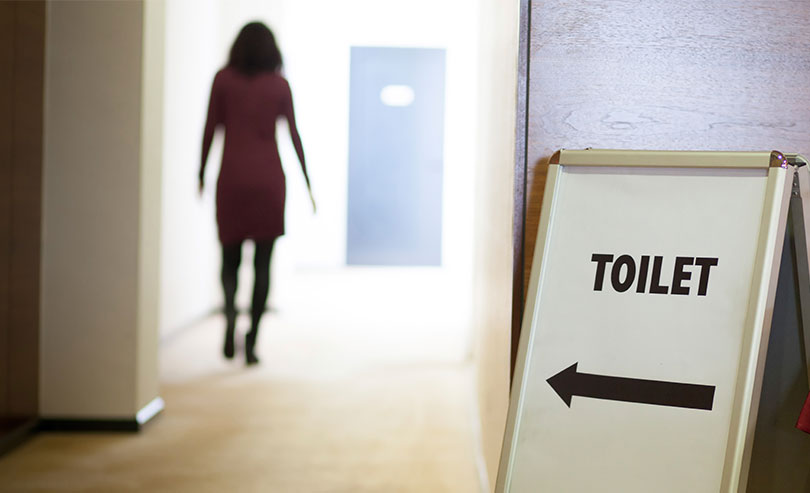Photo Credit: Wavebreakmedia / iStockPhoto.com
Diagnosing Overactive Bladder
Millions experience discomfort and embarrassment due to overactive bladder, but are too embarrassed to discuss urinary incontinence and other symptoms of OAB with their health providers. They suffer needlessly, because effective treatments are available.
If you think that you may be suffering from OAB, the first step to relief is to talk with your health care provider who will determine if you have overactive bladder or another health condition.
Preparing for Your Appointment
In order to reach a diagnosis of OAB, your health care provider will need to obtain a detailed history from you. You will need to be prepared to report any other health issues you currently have or have previously experienced.
Be ready to provide a list of your current medications and any supplements you take. In order to provide your health care provider with the most accurate information about your symptoms, keep a urinary journal for a couple of weeks prior to your appointment.
Meeting With Your Health Care Provider
While you’ll initially seek help from your primary care provider, you’ll likely be referred to a urologist or a uro-gynecologist. Urologists treat men and women while uro-gynecologists specialize in helping women who suffer from disorders of the urinary and reproductive tracts.
Your specialist will review your past medical history and go over your journal or summary with you. They will ask you specific questions related to your pelvic and urinary health and you will be asked to identify your symptoms and when they first appeared.
If you are female, you will be asked about your gynecological history; males will be asked about prostate health. You will be asked about abdominal and pelvic surgical procedures if you have had them.
A physical examination, focusing on your pelvic area, will be conducted. A vaginal or rectal exam may be performed. You may be asked to continue or modify your diary. Tests will be ordered to help reach an accurate diagnosis.
Tests for Overactive Bladder
Many tests are used to help health care providers reach a diagnosis of overactive bladder and rule out other bladder problems; a correct diagnosis is essential to formulating an effective treatment.
Blood Tests
Blood tests may be conducted to rule out other health conditions. For example, frequent urination is a sign of diabetes. Your blood glucose level, electrolytes and kidney function may be checked this way.
Urine Tests
You can team up with your doctor to craft a more aggressive Overactive Bladder treatment plan with a combination of these approaches.
You will be asked to provide a urine sample, which will be examined for signs of infection — urinary tract infections cause urgency, discomfort, and frequent urination.
Your urine will also be checked for the presence of glucose, which is an indicator of diabetes, and examined for signs of kidney disease like the presence of blood or protein in your urine.
Post Void Residual Volume Tests
These tests are designed to see if you empty your bladder completely when you urinate. You may be asked to urinate and have an ultrasound done afterwards. Using sound waves, the ultrasound will show if you are emptying your bladder completely when you go to the bathroom.
This test is painless, however you will be asked to drink fluids before the test so you may experience minor discomfort and urgency if your bladder is full.
A post void residual volume test may also be performed without an ultrasound examination. You will be asked to empty your bladder. A urinary catheter will then be inserted and the urine left in your bladder will drain via the catheter and be measured.
Insertion of a urinary catheter is quick, and it will be removed immediately after the test is performed. You may experience some discomfort while the tube is being placed, but removal is generally painless.
Bladder Stress Test
A bladder stress test is used to help determine the cause of urinary incontinence. You simply drink water and then are asked to cough. This test enhances evaluation of your pelvic floor muscles.
Cystoscopy
A cystoscopic exam may be needed. A small instrument is inserted into your bladder, via your urethra. This allows the test provider to visualize your bladder and urethra internally. Cystoscopy is an invasive procedure.
Advanced Testing Methods for OAB
Urodynamic testing is an expensive, invasive, complex series of tests conducted if diagnosis is difficult. It is also used if you have OAB and present with atypical symptoms, or do not respond to treatment.
Uroflowmetry is used to see if obstructions are present, while cystometry measures pressure within the bladder. It is used to evaluate how much urine your bladder is capable of holding. A voiding cysto-urethrogram is used to identify structural problems within the bladder.
Benefits of Knowing Your Diagnosis
By reviewing your diary, conducting a detailed patient history, and using medical tests, your health care provider will reach an accurate diagnosis of your urinary problem.
Once an accurate diagnosis is made, a wide array of treatment modalities are available which will eliminate or decrease your symptoms of OAB.







